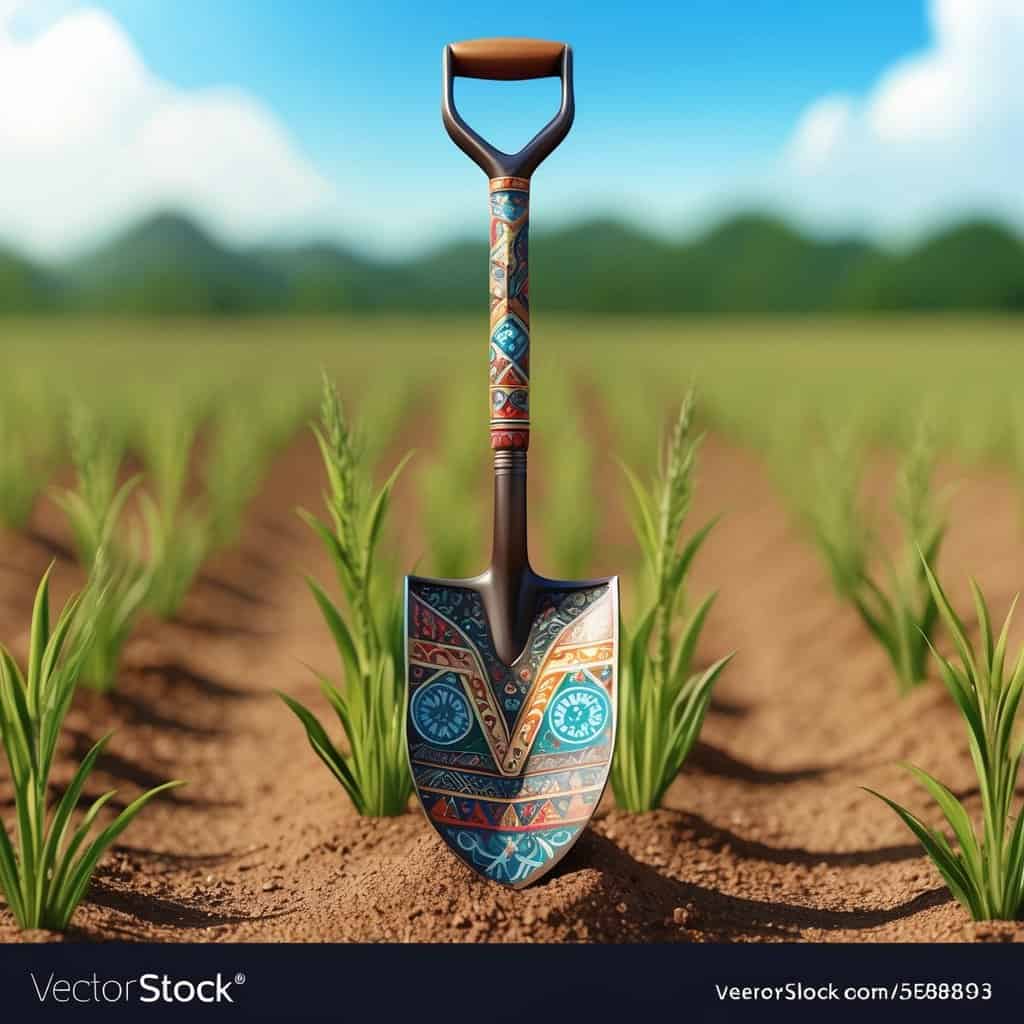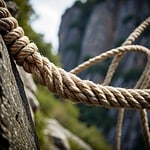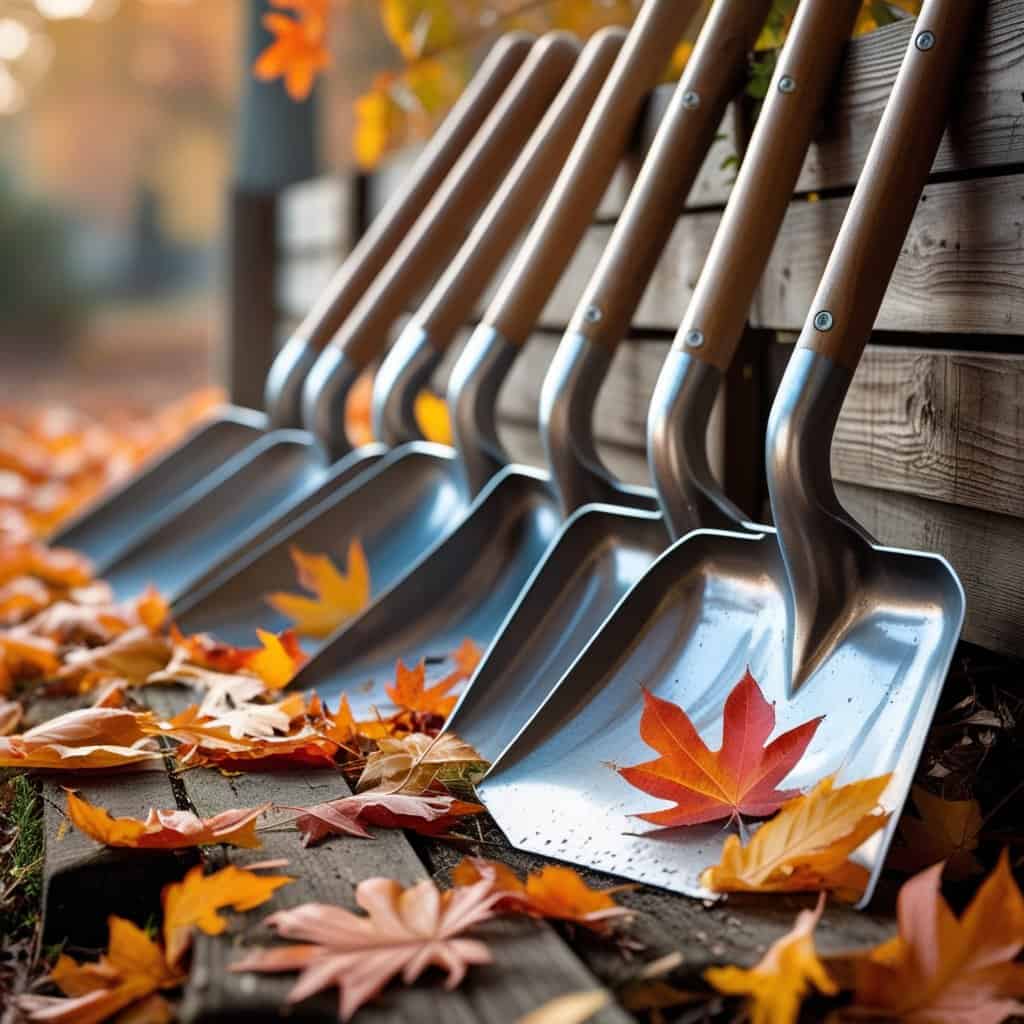The shovel, a tool that has surpassed its practical applications, has become a profound cultural symbol across different societies and eras. Beyond its utilitarian role of digging and moving Earth, the shovel evokes the human spirit of endeavour, from the sweat of labour to the ceremonial groundbreaking of new beginnings. The Cultural symbolism of shovels has been woven into cultural narratives, symbolizing hard work and perseverance, often appearing in art, literature, and ceremonies.
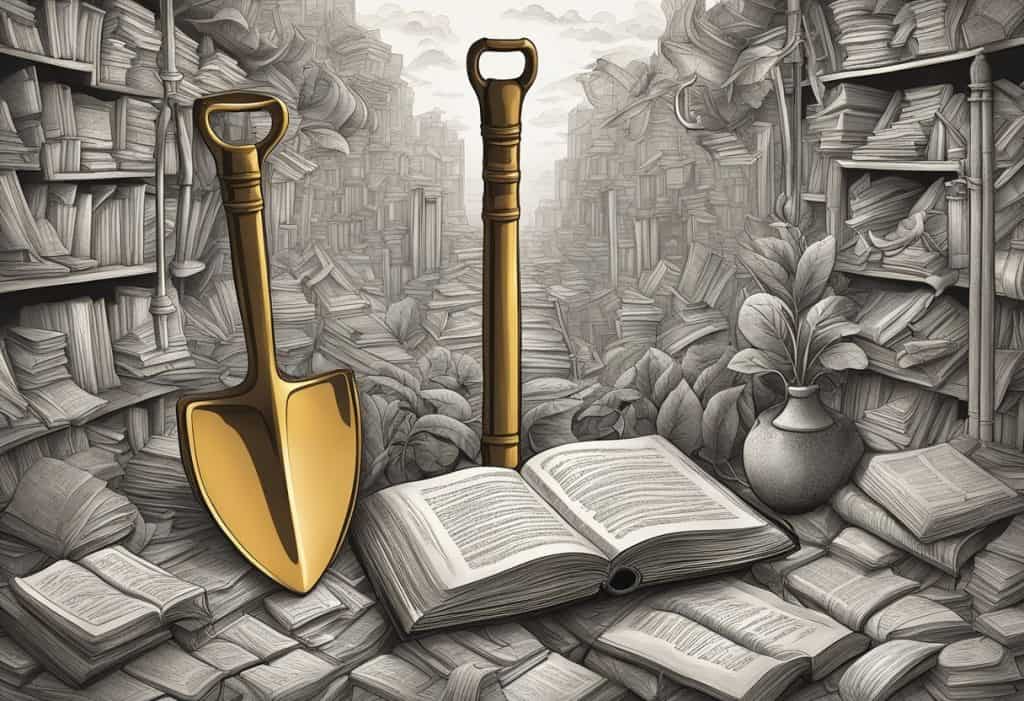
Table of Contents
Cultural Symbolism of Shovels: Historical Roots
Shovels, deeply embedded in the fabric of human societies, have transcended their utilitarian roles to become symbols of profound historical and ritual significance in agriculture and ceremony. Their depiction in literature often speaks to themes of toil and the search for sustenance or treasure, while in art, they can represent everything from the gritty reality of manual work to the noble ideal of cultivation. As we examine shovels in cultural symbolism, we uncover their roles in industry and warfare, their ceremonial significance, and how they’ve been used in branding to convey reliability and hard work.
Ancient Civilizations and Rituals
In ancient civilizations, shovels were revered for their roles in construction and ceremonies. The Egyptians, for example, utilized shovels made of animal bones and wood in their elaborate burial rituals. They believed shovels guided souls and helped construct their final resting places. When tombs were unearthed, shovels were often found among the grave goods, indicating their significance beyond mere utility. In early South China, a duck-shaped shovel dating back to the Han dynasty was discovered in a grave, suggesting the tool’s importance in the region’s complex societies.
During the groundbreaking of new palaces or city walls, the Chinese used ceremonial bronze shovels. These ornately decorated shovels were part of rituals to honour deities of the Earth, highlighting the reverence for the tools that shape our environment. The shovel symbolized harvest and hard work in medieval Europe, embodied in art and literature. It was heralded in tapestries and songs, returning to its cultural importance. The image of farmers with shovels became synonymous with fecundity and prosperity.
In America, pioneers wielded shovels to tame the wilds, transforming these tools into icons of exploration and settlement. The shovel’s transformative power was celebrated as a force of civilization, a crucial component in the narrative of progress, and a testament to the indomitable pioneering spirit.
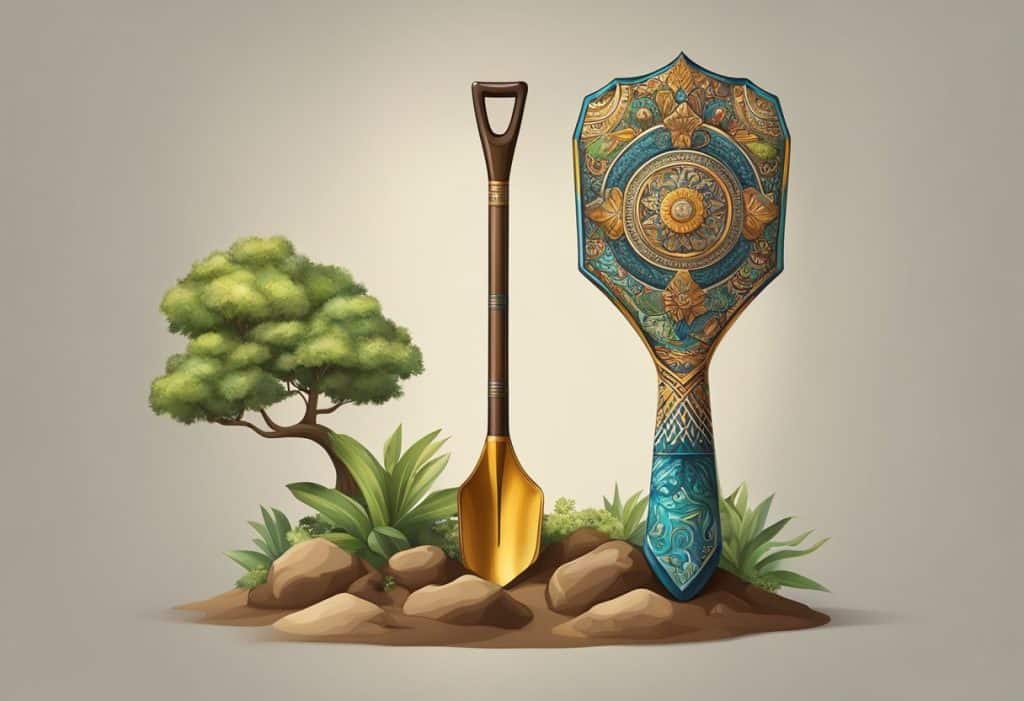
Shovels in Literature and Mythology
Shovels, with their profound roles in literary and mythological stories, symbolize labour, the unearthing of truths, and, sometimes, the transition between life and death, adding layers of intrigue and interpretation to their symbolic significance. In the Bible, shovels are utilized in agriculture and ritual, and they are mentioned in the context of digging and burying. For example, in Isaiah 2:4, there’s a powerful image of turning swords into plowshares and spears into pruning hooks, indicating a transformation from war to peace and, by extension, instruments of harm into nurturing tools. Burying with a shovel has connotations of humility and returning to the Earth, as in the routine of burials.
Shovels also appear in various folklore and legends, symbolizing work and uncovering hidden things. The leprechaun’s character, often depicted with a shovel, is said to bury a pot of gold at the end of a rainbow, infusing the shovel with notions of treasure and the elusive nature of wealth. In the Russian folktale of Baba Yaga, the witch’s hut is said to stand on chicken legs and can only be entered with a specific command. This hint suggests that uncovering the secrets within requires more than just physical digging; it requires knowledge and the right tools, metaphorically represented by the shovel. In these tales, shovels are extensions of human intention, bridging the natural and supernatural, revealing what lies beneath the surface.
Shovels in art and iconography are not just tools for digging but carry rich metaphorical meanings. They often symbolize labour, agriculture, and even death or burial. In medieval heraldry, a shovel or spade can be a charge displayed on a coat of arms, denoting agricultural duties or the importance of manual labour to the family’s origins. Notable examples included the armiger’s commitment to cultivation and growth, in terms of land and figuratively, in their community or realm. In literature, shovels have been used to symbolize the hard work and toil of the working class, as seen in the works of John Steinbeck and other social realists.
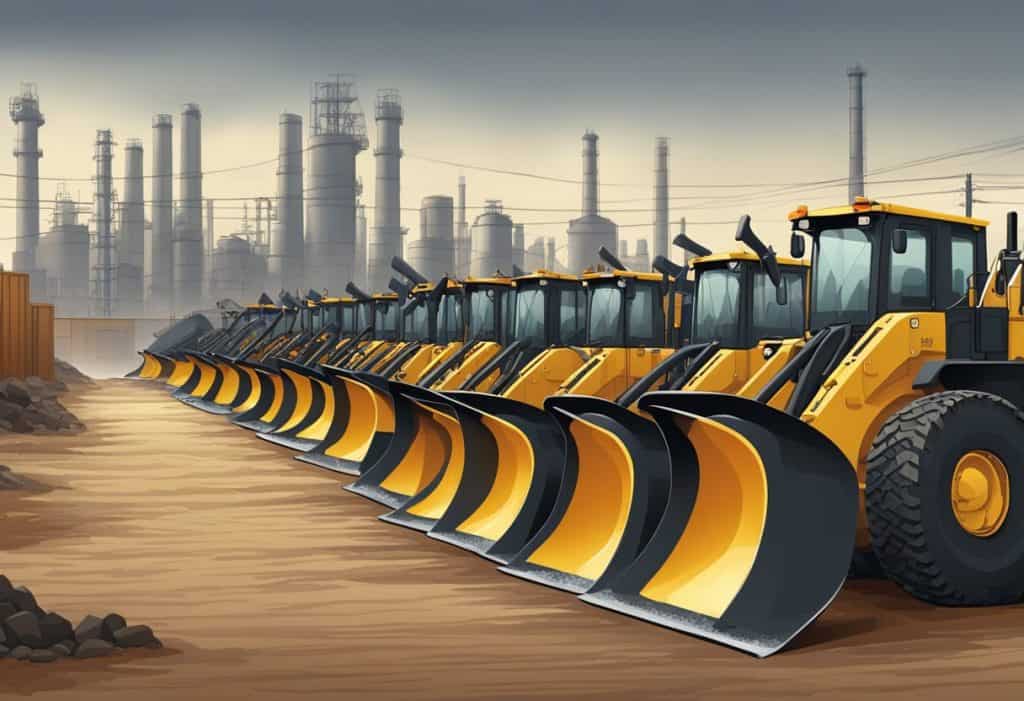
Political and Social Movements
The shovel has been appropriated in political and social movements to symbolize grassroots activism and community organization. It represents the collective effort required to ‘dig in’ and address societal issues at their roots. The shovel brigade campaign was an initiative that symbolizes community members contributing to a cause, exemplified by each person taking a shovel to help with communal labour or protest. There is also the green movement, where shovels are used symbolically in environmental campaigns to represent reforestation efforts and the hands-on restoration of natural landscapes.
Industrial Revolution Impact
With the advent of the Industrial Revolution, the shovel became a symbol of progress and development. Shovels are portrayed in art and literature as tools that facilitated the massive infrastructure projects of the era, from railroads to canals. The shovel’s role in these projects symbolized the transformative power of human labour and the potential for progress through technological innovation. Shovels are often depicted alongside other industrial icons, such as steam engines and factories, underscoring their role in the era’s transformative work.
In the military context, shovels take on a nuanced symbolism. They are utilized prominently in military insignia to denote engineering units, reflecting our recognition of their critical role in construction and combat operations. The shovel’s appearance in military insignia symbolizes the importance of engineering and construction in warfare and the adaptability and resourcefulness of these units. Shovels also appear as a component in collectible items to represent the trench warfare of WWI and battlefield fortifications.

Ceremonial Uses of Shovels
Shovels are often used in groundbreaking ceremonies to symbolize the beginning of a new construction project. Dignitaries perform this act, which signifies the investment and effort to come. The ceremonial use of shovels in groundbreaking events tickles citizens as they line up, virgin shovels in hand, to turn the first spade of soil, indicating that progress will speed ahead. During planting and harvest festivals, shovels represent the cultivation and bounty of the land. They are used to plant crops and during harvest ceremonies to symbolize the reaping of the season’s rewards.
Final Thoughts
The shovel, a seemingly simple tool, has evolved into a powerful cultural symbol that resonates across time and societies. From its ancient roots in burial rituals and agricultural ceremonies to its modern role in groundbreaking events and social movements, the shovel has come to embody the human spirit of perseverance, hard work, and progress. Its symbolism extends beyond its practical applications, appearing in art, literature, and mythology as a metaphor for uncovering hidden truths, cultivating growth, and transforming the world around us.
In a rapidly changing world, the shovel’s enduring symbolism is a testament to staying grounded, working hard, and continuously striving to uncover new possibilities. As we move forward, let us embrace the lessons and wisdom embodied in this humble tool, using it as a source of inspiration and a reminder of our shared humanity.
Frequently Asked Questions
What does a shovel symbolize?
In religious texts, shovels often symbolize labour and the act of unearthing truth or morality. The implementation is sometimes linked to humility and the hard work necessary to sustain faith.
How is a shovel interpreted when appearing in dreams?
When a shovel appears in dreams, it may represent the need to dig deeper into one’s subconscious or to address buried emotions. It’s also associated with the start of a new project or the ‘digging’ for new opportunities.
What innovations in shovel design have occurred since its invention?
Since its invention, the shovel has undergone various design innovations, such as introducing ergonomic handles to reduce physical strain and using new materials like steel for improved durability and efficiency.

